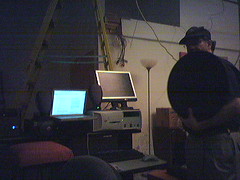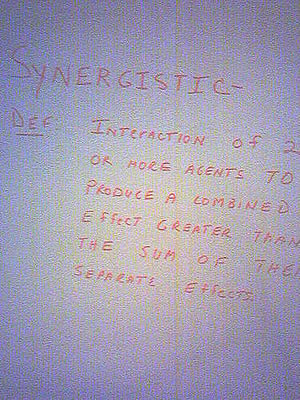Recently I was emailing with Andrew about Daniel Pink’s new book “A Whole New Mind”. Andrew caught Dan’s great talk at SXSW and was reading his book, one chapter of which is devoted to design. There’s a review at the CEO Read site.
“His key thesis is that the future no longer belongs to analytical professionals—the linear, logical knowledge people (the “SAT people,†he calls them), It belongs instead to creators and empathizers.”
Dan writes in big strokes, talking about the right-brain in revolutionary terms to make his audience of left-brain-heavy business people sit up and listen. The reality of the situation is probably more subtle: we need to build on, not replace, the left-brain thinking of the last century or two. Arthur D. Little introduced science to management in the 1880’s and it has benefited us greatly. Adding creativity and empathy to that will improve management even more.
Looking for examples, I think of people like Paul Ford who can think and discuss politics, literature and programming simultaneously without switching gears. We might ask if this isn’t just another way of talking about “Renaissance Men” or polymaths. What I think is different — especially in America where we’re not shackled to titles and degrees — is the blurring together of these fields so that it resembles the early days of science when everything was simply philosophy.
What’s important, as Dan Pink says, is that we need this thinking more than ever. He cites the three-headed terror of “Asia, abundance and automation” that forces us to respond with higher-performance thinking. Austin identifies what I think is a fascinating but no less daunting other side of this coin:
…in the past business had to manage constraints (time, money, products, manufacturing, markets) to create possibility. In the new age (of imagination, conception, or whatever), we’ve removed all of the constraints (except for time), so now businesses have to create constraints to manage possibility.



